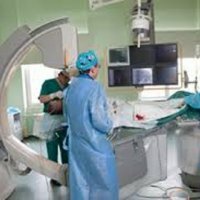Arrhythmias in children of the first year of life

Most parents begin to worry about finding that their baby's heart beats too often, but this phenomenon occurs quite often in newborns. It should be borne in mind that such changes in the frequency of heartbeat can indicate the occurrence of a violation in his work.
Arrhythmia is a violation in the frequency of the heartbeat or in its regularity. Arrhythmias in infants occur quite often, a change in the heartbeat can be observed even in the fetus. Such deviations should not go unnoticed by young parents, as with their further development and untimely treatment, it will be very difficult to cope with this problem. In addition, arrhythmia can seriously endanger the child's life. The most important task in detecting arrhythmia in children of the first year of life is the timely access to a doctor for help.
Causes of arrhythmia in children
There can be several reasons: firstly - congenital heart disease in a child, secondly - inflammation of the heart muscle, third - the use of medications, and fourth - the complication after surgical intervention in the heart.
Signs of arrhythmia in a child of the first year of life
Common signs are: shortness of breath, pallor of the skin, unmotivated refusal to eat, general restlessness.
Types of arrhythmia
Arrhythmia can be divided into 3 groups: violation in heart rate - extrasystole, palpitation - tachyarrhythmia, rare heartbeat - bradyarrhythmia. Each group has within itself a division into subgroups. The most frequent in children of the first year of life can be observed violations in the frequency of heartbeat, i.e., extrasystole. This type of arrhythmia does not particularly affect the work of the heart and is not dangerous to the life of the child.
Of all types of arrhythmia, there is a dangerous case of tachyarrhythmia, namely, unexpected attacks of rapid heartbeat from 180 strokes and higher. These attacks need quick and qualified help. The duration of such an attack can range from a few seconds to several hours. Ends as unexpectedly as it begins, is characterized by a pause, after which the control of the frequency of the heart rhythm takes on the "driver" of the heart - the sinus node. In the event that the seizures are not frequent or the child is too small, they are limited to prescribing pre-emptive treatment, in all other cases resort to surgical intervention.
The frequent rhythm of the heart can be observed not only short-term in the form of seizures, but can take quite a long time - weeks, months, years. This sign is characterized by chronic non-paroxysmal tachycardia. Most often this deviation occurs in children, whose course of intrauterine development was unfavorable or the mother had disorders of the nervous system during pregnancy.
The drop in heartbeat to 60-40 beats per minute has received the name of bradycardia in medicine - the third kind of arrhythmia. The most dangerous is the syncope and the increased risk of unexpected cardiac death.
Prevention of arrhythmia in a child: advice
First - do not take care of what the child cardiologist tells you, if you need to put your child under the supervision of doctors - do not delay with hospitalization.
The second - for a child with a violation of the heart rhythm, an individual vaccination schedule is set.
Third - if at least once a child fainted, go to see a cardiologist for a consultation, do not delay for a long time.
Fourth - if one of the parents suffers from an arrhythmia, report this to the district pediatrician.
Fifth - to avoid serious complications of arrhythmia, do the newborn ECG after the first month of life and after 1 year. Save the research results.



